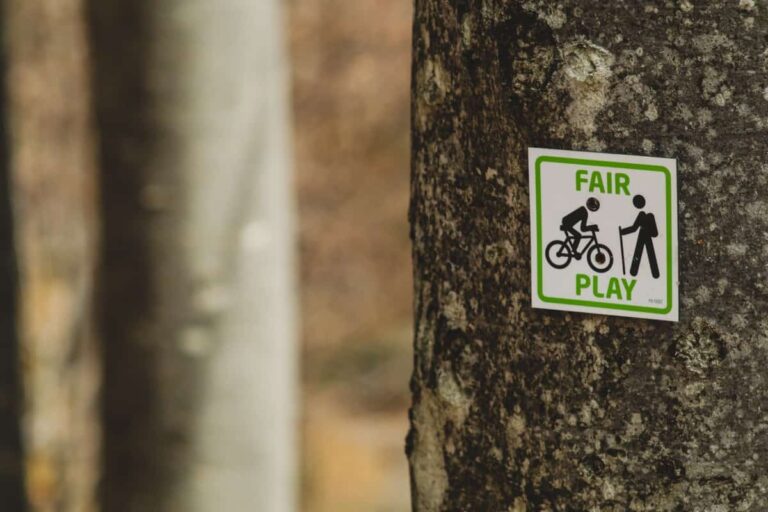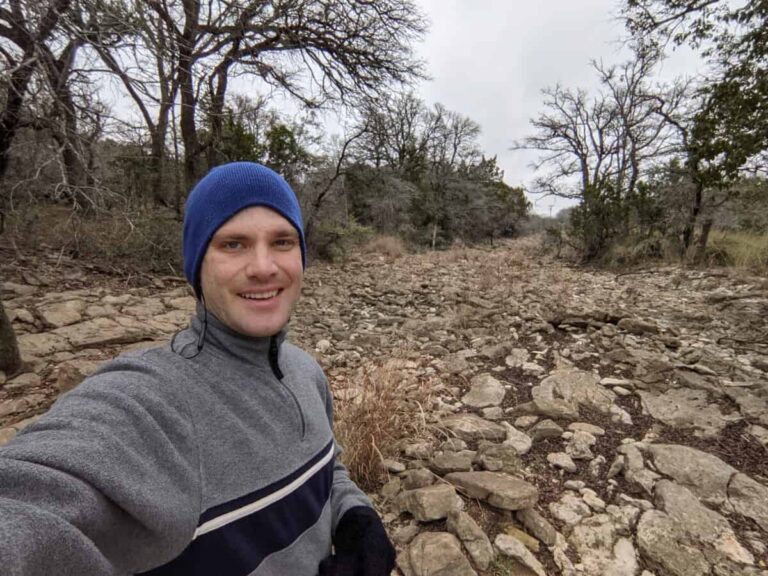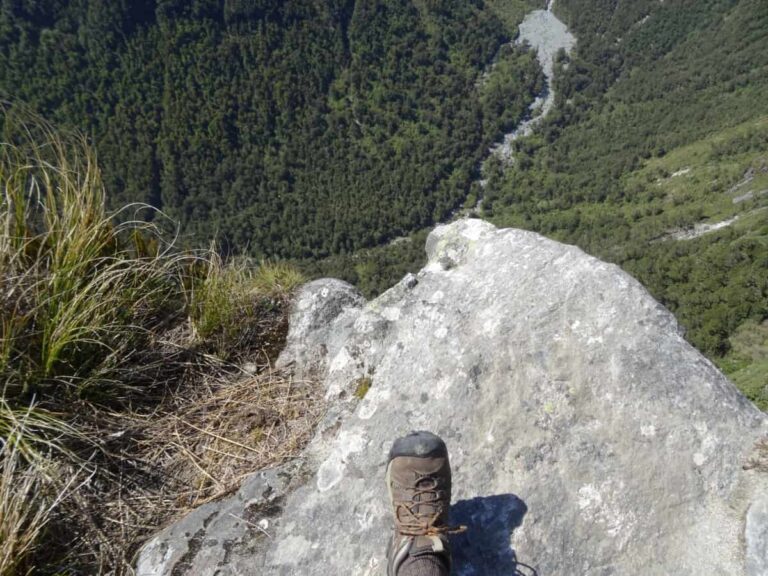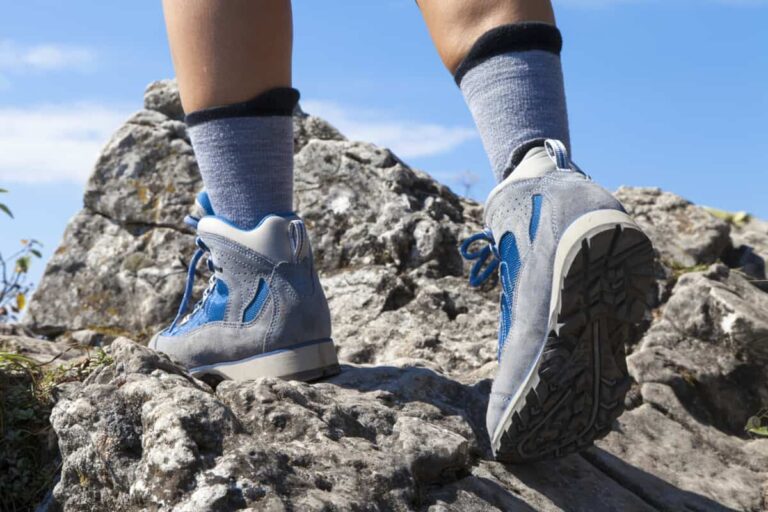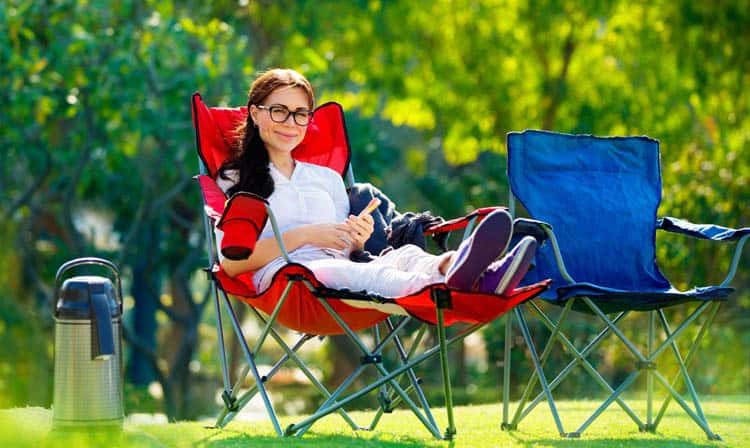Why is Hiking Bad For You?
Hate hiking? Maybe you’re not wrong! Take a look at the dangers of hiking here.

Dangerous animals, difficult paths, and the possibility of sprained or broken bones can all make hiking bad for you. However, while there are a number of dangers out there, there are also ways to prepare so that you can give yourself a chance to enjoy hiking.
To conquer those hiking paths, it’s wise to understand the dangers that might be out there. Read on, and you’ll learn all about what factors can make hiking bad for you and what you can do to increase your chances of staying safe.
The Dangers Of Hiking
There’s no denying that hiking is a great pastime overall. It’s great for your health, gets you away from the civilized world, and allows you to get closer to nature for a while.
However, that doesn’t mean there aren’t risks involved in doing it. If you’re thinking about going on a hiking trip, it’s worth your time to familiarize yourself with the dangers you might face on the trail.
Not only can hiking be bad for you, but camping can also be bad for you! Find out how in our article 18 Reasons Why Camping Is Bad For You.
Difficult Trails
Hiking trails come in different levels of difficulty. Some will provide you with an easy, relaxing trek on a well-marked path while others may take you through snow, up steep hillsides, along cliffs and even across streams. How will you know what kind of trail you’re on?
Ending up on a trail that is well beyond your experience level can quickly cause you to never want to hike again, and that’s putting it mildly. In worse situations, hiking where you shouldn’t be can result in injury and in rare cases even death by falls or other accidents.
Sprains and Strains
Hiking is a great activity if you love straining your body beyond what it can handle. Cramps and aches in your legs, feet, and even abdomen can bring your fun to an abrupt halt if you aren’t prepared for the hike.
It turns out this is the most dangerous thing to be aware of for hiking.
A study found that from data from several national parks, 22.5% of non-fatal injuries were because of a “short fall” while hiking/walking.
You might head out on the trail thinking you’ll feel better on the way back, only to find yourself limping back to your car with a sprained ankle. The good news is – these injuries aren’t generally life-threatening. That said, they can at least really sour your experience.
However, even the most benign of injuries can be very dangerous if you’re by yourself. If you’re going to be far away from civilization and other people, make sure you take a buddy.
Painful Plants
It’s not uncommon to end up touching some plants while you’re out on a hiking trail. Whether you’re someone who likes to stop and smell the flowers or just end up having to squeeze by some plants on your trail, you’ll probably come into contact with them sooner or later.
Thanks to Wiki Voyage’s handy Poisonous Plant Guide, you can easily get a sense of what kinds of nasty plants are out there. When it comes to skin reactions, things like poison oak and stinging nettles can ruin your hike. Beyond that, it’s worth remembering to not go eat any mushrooms you see out in the woods.
Getting Lost
Unless you’re careful to stay on the right path, you could end up getting lost in the woods. In some places, multiple hiking trails can cross one another. This is something that can get quite confusing unless you know where you’re going, and you might end up wandering trails for much longer than you had intended.
That can be frustrating in itself if you only intended to head out on a two or three-mile hike and end up stuck for the entire day.
My family experienced this one fateful hike–we were in the Uinta mountains and we were trying an alternate route to one of our favorite valleys to visit. We got lost.
It was very scary because we ran out of water. Typically where we’ve hiked in the mountains, there were plenty of streams so we’ve never worried about water before. This time was a dry year, and rivers that would have had water were dry.
We were incredibly blessed to find a puddle. I’m not exaggerating– in a dry river bed we found one spot that had some shade and that the water had collected. There were bugs and twigs in this stagnant pool, but thankfully we had a gross-tasting coal water filter. You don’t know how good water tastes when you face the prospect of not drinking it again.
Thankfully it was daytime and we were in the mountains so we were able to find out bearings with maps and compasses. It could have fared much differently, though.
Wild Predators
Cougars, bears, wolves and more can make their homes in the area you’re hiking through. This is something worth keeping in mind any time you head out into the woods. You just never know when you might come across a predator, or worse, a predator with babies.
There’s no doubt you’re heard about various attacks by predators on humans out on hiking trails. It always seems to be hiking trails, doesn’t it? While it is incredibly rare for these animals to attack human beings, it’s still a terrifying experience that many would prefer to avoid.
Always keep in sight of each other. Cougars especially are known for targeting helpless youth and those who are alone.
If you’d like to find out more about the statistics of animal attacks, check out our post, here.
Snakes
Just imagine walking along, enjoying nature when suddenly you hear a rattle coming from under your feet. Even if you aren’t familiar with the sound, your body certainly is. It’s the telltale call of the angry rattlesnake, and it’s worth knowing that not all snakes will give you such a noticeable warning.
It’s all too easy to wind up stepping on a snake when you’re walking around in the woods, brush or other hiking areas. Depending on your location, that could be a truly terrifying thing. You’d have to watch closely to make sure you don’t step on a wandering snake on the trail, and then who’s looking at the scenery?
Over 7000 people suffer from snakebite every year (source)–only 1 out of 500 actually die from snakebite, but your risk of snakebite goes up if you’re out in nature. (Or if you’re working in your backyard for that matter)
Bugs and Spiders
Snakes and predators might typically opt to stay away from humans in the vast majority of cases, but there are some creatures that don’t seem to mind crawling right onto you. Some of them might even see you as a great way to get a meal.
There are steps you can take, of course. Wearing clothing that covers as much of your skin as possible and using repellents can be great ways to limit your bug experience. That said, even all of that effort isn’t going to be 100% effective. You may still find some crawlies on your clothing later.
DEET is the easy way to avoid bugs–but if you’re interested in a more natural post, I found over 30 scientifically tested ways to naturally repel bugs in our other post here.
Frostbite and Heat Exposure
Weather is crazy! We have the weather forecast as a great resource, but often that forecast is just a basic idea of what to expect. A sunny, 75-degree day can easily develop into a sunny 85-degree day. While that might not seem like a big deal under normal circumstances, it can have some nasty effects while you’re hiking, including heat exposure, dehydration, and even heat stroke.
Some difficult trails can also take you across the snow. While snow and freezing temperatures are easier to avoid, they can still become a problem. If you aren’t dressed to absolute perfection, you can end up uncomfortable at the very least. In the worst-case scenario, frostbite can be on the table as well.
In the mountains, it’s often rain that will come and go without anticipating it which can add to your likelihood of getting sick, or it can just set a gloomy tone for your hike.
In these scenarios, it’s a concern about being hit by lightning. There are actually some things you can do to reduce your risk. Check out our post to find more details.
Scrapes and Bruises
Tripping, falling, and general clumsiness can all add to the possibility of coming home from a hike in worse shape. There’s almost no end to the annoying little injuries that can occur while you’re out in the wild.
Bushes and branches can scrape up your skin. Even a small change in the path can result in an fall, leaving you bruised, scraped up and probably embarrassed. You may think you can use a tree for a bit of stability when a fall is imminent, but even that could leave you with splinters.
Sunburns
Most of us prefer to hike when the weather is decent. However, nice weather can also increase your potential for ending up with a sunburn. You’ll have to make sure to slather yourself in sunscreen just in an effort to avoid a heightened potential for skin cancer.
Even if that isn’t your fear, sunburns are uncomfortable, unappealing, and they only help to speed up the formation of wrinkles and fine lines. It’s just no fun. Sunburns can take days to heal and when the pain is gone, it’s often replaced with gross peeling skin.
Broken Bones
If you get really unlucky, a fall can result in something worse than a sprain. You may twist your ankle and soon realize that something is severely wrong when you try to walk on it again. Otherwise, you may have a fall that ends with a broken wrist or arm.
Broken bones can happen anywhere, but they can be especially scary when you’re out in the woods. You can’t really know if anyone will come by who can help you, or if they will be willing to help at all. If you were hiking alone, you truly may not have the ability to get out of there and to a doctor. Always take a buddy.
How to Stay Safe While Hiking
Hiking won’t be such a miserable experience if you know how to make the experience meet your needs. There will always be a chance that accidents can occur, but with these tips, you’ll be able to avoid as many as possible and handle the ones that occur with aplomb.
Create a Plan and Stick To It
Research your trail before you head out. Make sure you know what to expect with regard to the difficulty you may experience, the length of the trail, and how long it will take you to complete it and return to the starting point. Don’t stray from that plan. Time is of the essence when you’re out in the wilderness, and you don’t want to be out there when it gets dark!
Hike At Your Comfort Level
If you’ve never hiked before, don’t start off on a difficult trail. That’s a recipe for embarrassment at the very least. Look for a trail that can give you an easier introduction to hiking. You’ll enjoy it more and be much less likely to end up injured.
Not sure what your hiking experience is? Our article on finding the right hiking pace can be useful in determining what kind of hiker you are. Check it out here!
Know How To Respond To Animals
Most animals can be scared or annoyed until they go away, even if they are big predators. Keep in mind that most wild animals don’t want anything to do with humans. They’d prefer to have the chance to get far, far away from you.
There are a lot of animals out there. It can be difficult to know how to respond to each one that comes across your path. You’ll find some handy tips in our article: Does a Campfire Keep Animals and Bugs Away?
Stay On The Trail
Trails are there for a reason, to take you on an enjoyable journey without leaving you lost in the woods. Not to mention many of them are well-walked to make sure that you don’t have to deal with poisonous plants, difficult rocks or other debris that can make the hike less fun.
This one can be tough because in the wilderness some trails can be very subtle if they’ve not been maintained for a while. Even if you are not taking any forks–a map and compass with the knowledge to use them can be life-saving.
In my last trek up the mountains, my brother-in-law used the GPS in his phone to navigate us up in the mountains. An app such as Alltrails allows you to download maps of hiking trails offline and use the GPS in your phone.
If you bring an extra power brick and only use the phone sparingly, then this can be a very convenient way to stay safe and located within the wilderness.
Bring Some First Aid
Even if you don’t like to pack a lot on your hikes, make sure that you take at least a basic first aid kit. This is one of those things that is absolutely better to have and not need, rather than need and not have. It’s a good friend when you’re dealing with small injuries, and it can be a best friend if you’re in a potentially lethal situation.
